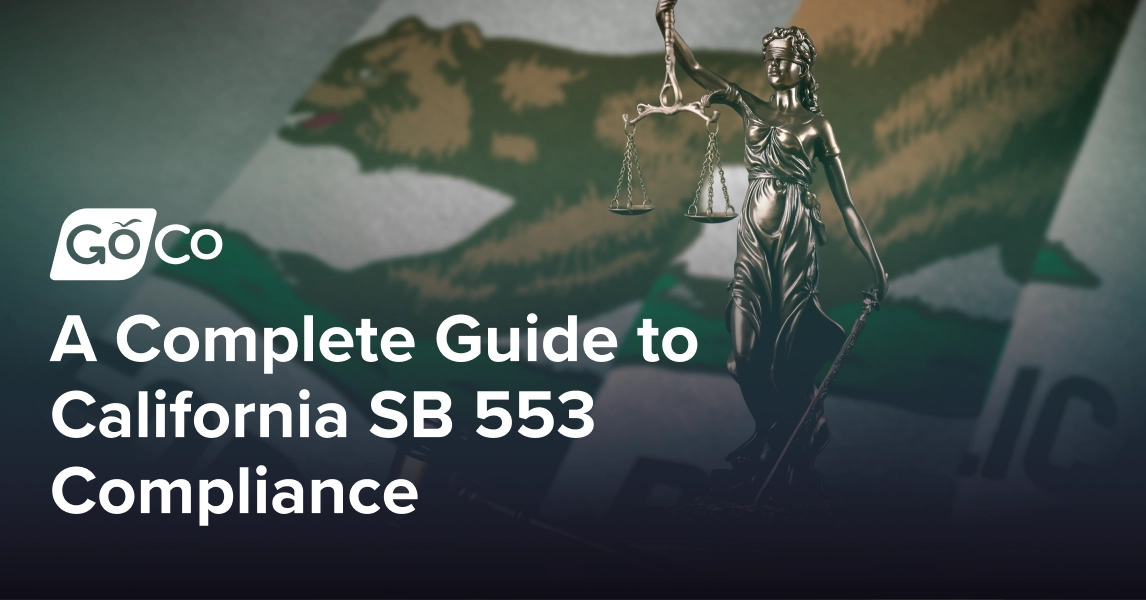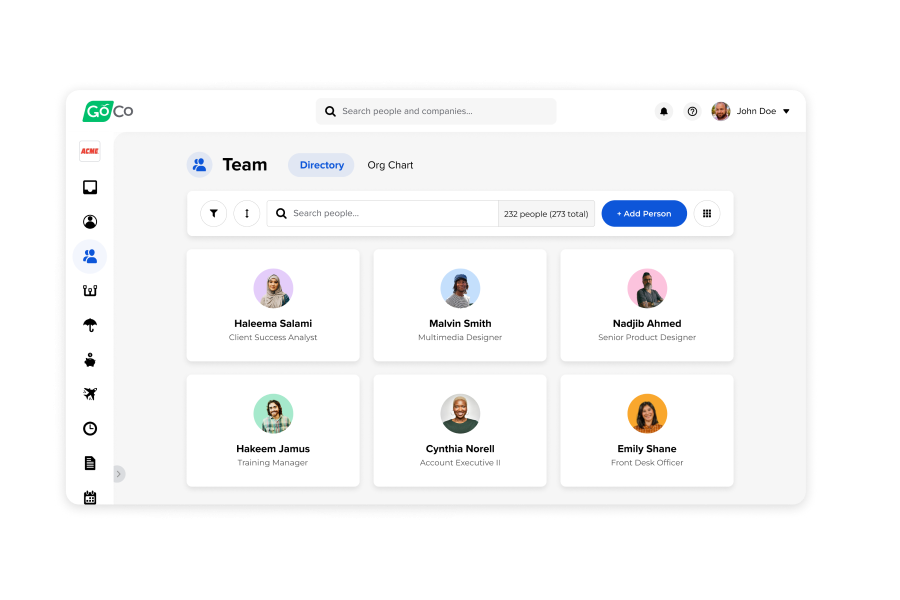A Complete Guide to California SB 553 Compliance
Everything HR and small businesses need to know about CA SB 553 and how to establish a workplace violence prevention plan.
by Anna Coucke - June 18th, 2024
What's CA SB 553?
On September 20, 2023, California Governor Gavin Newsom signed California Senate Bill No. 553 (SB 553) into law, taking a significant step towards ensuring safer workplaces. The main outcome of this legislation is that most California employers must now develop and implement comprehensive workplace violence prevention plans (WVPPs).
So, what exactly does SB 553 mean for businesses? Keep reading to see what HR and business leaders in California must understand about SB 553 and what actions are needed to comply with this new legislation.
Download the 2024 HR Compliance Calendar
How Can Businesses Comply With SB 553?
In short, SB 553 requires California employers to take steps to prevent and respond to workplace violence.
This bill builds off of existing protections for healthcare workers by requiring most California employers to establish a written WVPP. Its addition of Section 6401.9 to the California Labor Code, effective July 1, 2024, requires covered employers to adopt a comprehensive WVPP.
The bill requires businesses to establish the following:
Customized WVPPs: Every workplace is unique, so employers need to create a violence prevention plan that addresses the risks that their organization may face. This plan should become part of the existing Injury and Illness Prevention Program (IIPP) framework. The plan must also designate the person or people in charge of implementing it by name or job title.
Employee Participation: A core principle of SB 553 is getting employees actively involved. This means including them in developing, carrying out, and regularly reviewing these violence prevention strategies.
Training and Awareness:
Annual training is mandatory for all employees of affected businesses. This training should cover:
The employer's specific violence prevention plan.
The law's definitions and requirements.
How to report concerns or incidents of workplace violence.
How to recognize job-related hazards, the employer's implemented corrective actions, how to seek help in preventing or responding to violence, and strategies to stay safe.
The violent incident log and how to access copies of records.
A chance for interactive Q&A with someone knowledgeable about the employer's plan.
Employers must keep training records that include the date(s) of training, content covered, and names and job titles of all trainers and attendees.
Detailed Reporting: SB 553 establishes procedures for reporting workplace violence incidents, with a strong emphasis on follow-up actions and intervention strategies.
High-Risk Incident Protocols: Employers must develop processes for handling violent incidents. This includes emergency response protocols and established procedures with emergency response agencies.
For further guidelines on establishing a WVPP that meets all of these requirements, check out Cal/OSHA's official resources and legal advisories.
Who Does SB 553 Apply To?
The rules and protocols in SB 553 apply to all California employers with at least one California employee, with the following exceptions:
Employers who are already abiding by Cal/OSHA’s Violence Prevention In Health Care standard (i.e. healthcare facilities).
Department of Corrections and Rehabilitation employers and law enforcement agencies.
Employees who carry out their work remotely.
Employers with 10 or fewer employees working in a location that is not open to the public.
California employers whose employees are all located outside of California.
While SB 553 is a California state law, it sets a precedent that may influence other states to adopt similar legislation in the future. The growing awareness of workplace violence and California's economic clout suggest legislation could follow in other states in the next few years.
What are the Penalties for Noncompliance?
Failure to comply with SB 553 by the July 1, 2024 deadline can result in citations and penalties (including fines of up to $25,000, license revocations, and even misdemeanors) from Cal/OSHA. Beyond financial repercussions, the lack of a WVPP could weaken your defense in legal claims that arise from workplace violence incidents.
Even though these rules are new, there is no implementation grace period, so businesses should make changes to comply as soon as possible.
How GoCo Can Help
If you're looking for a platform to help you with SB 553 and other compliance changes, GoCo's modern HR features can streamline your processes, document management, workflows, and much more!
Document Management: With GoCo, you can securely send, sign, and store your HR documents electronically, including violence prevention plans, training records, and incident reports. This ensures that all documents are easy to locate and retrieve in case of an audit or inspection.
Effortless Compliance: GoCo allows you to confidently navigate compliance with live HR expert support, a robust library of compliance materials, law alerts, state comparison tools, and more. Additionally, you can ensure you meet state and federally-mandated training requirements, OSHA reporting, and E-verify validation.
Streamlined Workflows: GoCo's automated workflows feature allows you to easily templatize and assign tasks and training to employees while viewing progress at a glance.
Ready to see how GoCo can transform your HR? Take a free tour of our platform today!
Recommended Posts
New Hire Paperwork and Compliance for California
Blog Articles
HR's Guide to Employee Record Retention [+Checklist]
Blog Articles
HR's Complete Guide to Hazard Pay
Blog Articles
Search...
Product
GoCo
Resources
Articles
eBooks
Webinars
Customer Stories






